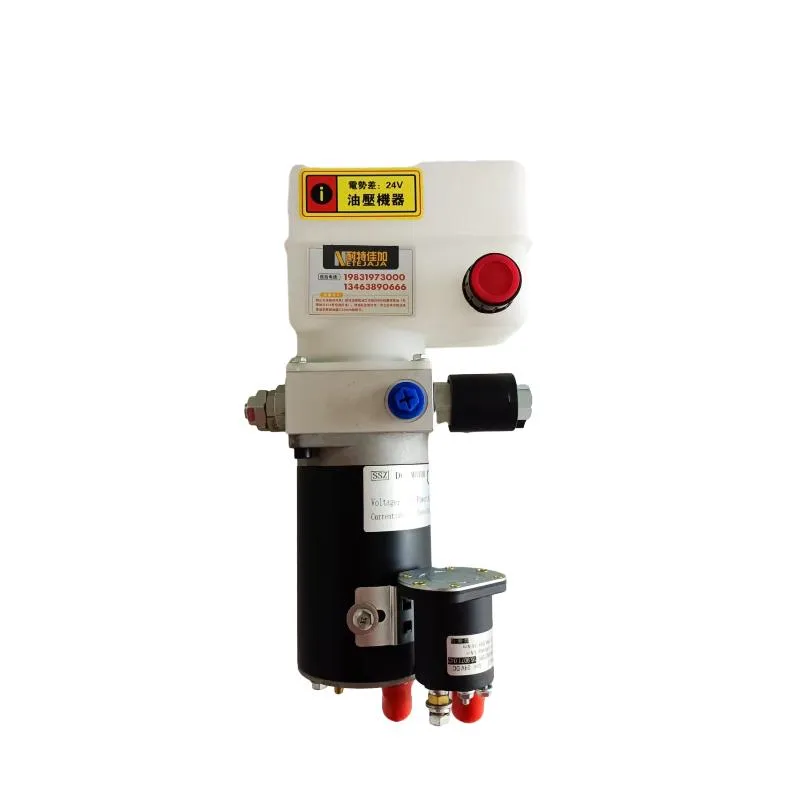Dec . 05, 2024 10:33 Back to list
filling hydraulic cylinder product
Understanding Filling Hydraulic Cylinders A Comprehensive Overview
Hydraulic cylinders are essential components used in various applications, from construction and manufacturing to automotive and aerospace industries. They operate by using pressurized hydraulic fluid to create linear motion and force, making them integral to machinery that requires heavy lifting, pushing, or pulling. One critical aspect of maintaining hydraulic cylinders is ensuring they are filled correctly with hydraulic fluid. This article delves into the importance of filling hydraulic cylinders, the procedure involved, and the best practices to ensure optimal performance and longevity.
The Importance of Hydraulic Fluid Filling
Hydraulic fluid serves multiple purposes within a hydraulic cylinder system. Firstly, it acts as the medium through which force is transmitted, allowing the cylinder to perform its intended function. Secondly, hydraulic fluid lubricates the moving parts within the cylinder, reducing the wear and tear on components. Lastly, proper fluid levels help in temperature control, preventing overheating during operation.
If a hydraulic cylinder is not filled to the correct level, several issues may arise. Insufficient fluid can lead to cavitation, which occurs when the pressure in the cylinder drops too low, causing the fluid to vaporize and form bubbles. These bubbles, when they collapse, can cause significant damage to internal surfaces. Moreover, low fluid levels can result in a reduction in power output, reduced efficiency, and increased risk of mechanical failure. Conversely, overfilling can cause excess pressure and lead to leakage or even catastrophic failure of seals and other components.
Steps to Fill a Hydraulic Cylinder
Filling a hydraulic cylinder correctly involves a few straightforward but essential steps
1. Safety First Always wear appropriate personal protective equipment (PPE) and ensure the work area is safe. De-pressurize the system before beginning any work on hydraulic cylinders.
2. Check the Manual Refer to the manufacturer's manual for specific guidelines regarding fluid type, capacity, and filling procedures. Different applications may require different fluids, and using the wrong type can lead to damage.
3. Prepare the Cylinder Clean the area around the filler port to prevent contamination from dirt or debris. Contaminants can significantly affect hydraulic fluid performance.
filling hydraulic cylinder product

4. Drain Old Fluid (if necessary) If changing the fluid, drain the old fluid completely before filling. This step is crucial for maintaining fluid integrity and ensuring optimal performance.
5. Filling the Cylinder Using a funnel or a specialized hydraulic fluid filler, pour in the recommended hydraulic fluid until it reaches the designated fill level. Take care to avoid spillage as this can create dangerous working conditions.
6. Bleed the System After filling, it is essential to bleed the system to remove any trapped air, which can compromise performance. This process usually involves cycling the cylinder through its full range of motion while checking for any fluid leaks.
7. Check and Maintain Fluid Levels Regularly monitor the fluid levels and quality in the hydraulic cylinders. This practice helps identify potential issues before they lead to significant failures.
Best Practices for Hydraulic Cylinder Maintenance
To ensure longevity and reliability of hydraulic cylinders, follow these best practices
- Regular Inspections Frequently inspect cylinders for leaks, wear, and signs of damage. Catching issues early can prevent costly repairs.
- Fluid Analysis Periodically analyze hydraulic fluid for contaminants and degradation. Maintaining fluid quality is crucial for effective operation.
- Proper Storage When not in use, store hydraulic equipment in a clean, dry environment to protect it from contamination.
In conclusion, filling hydraulic cylinders correctly is vital for the effective and safe operation of hydraulic systems. By following best practices and understanding the intricacies of hydraulic fluid management, operators can enhance performance and extend the life of their equipment. Proper maintenance not only contributes to efficiency but also ensures safety in all hydraulic applications.
-
Fork Lift Power Units - Hebei Shenghan | Efficiency, Reliability
NewsJul.13,2025
-
1.5-Ton Turbocharged Cylinder-Hebei Shenghan|Hydraulic Solution,Energy Efficiency
NewsJul.13,2025
-
Auto Hoist Power Units-Hebei Shenghan|Efficiency&Industrial Lifting
NewsJul.13,2025
-
Double Acting Power Units-Hebei Shenghan|Hydraulic Solutions,Industrial Efficiency
NewsJul.13,2025
-
1.5 Ton Lifting Cylinder 70/82-40-290-535 - High-Performance Hydraulic Solution | Hebei Shenghan
NewsJul.13,2025
-
Fork Lift Power Units - Hebei Shenghan | Efficiency&Reliability
NewsJul.13,2025
